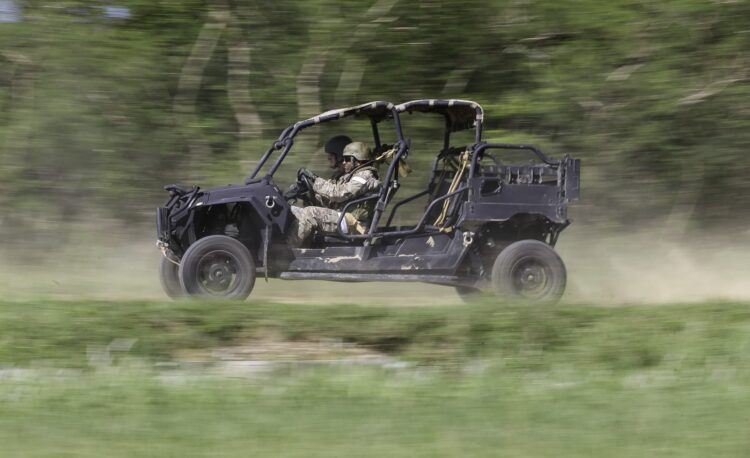Extreme driving is not just the ability to drive quickly and confidently under normal conditions. In closed academies that train special forces specialists, this discipline becomes a crucial part of the training process. The goal of these courses is not only to master the techniques but also to develop intuitive reactions to emergency situations. These academies often work with individuals who must be ready for any scenario — from transporting important people to participating in operations that require not just high-speed driving but also the ability to perform maneuvers at the edge of the car’s physical capabilities. But what exactly do future professionals learn in these courses?
Basics of Extreme Driving in Closed Academies
The main task of extreme driving academies is to prepare specialists who are capable of executing complex maneuvers under high stress. Educational institutions working with government agencies, law enforcement, and special forces teach future drivers to primarily control their vehicles at high speeds. It is important not only to maintain stable control over the car under low road grip conditions but also to make the right decisions when there is little time for contemplation.
Extreme driving requires the driver to quickly orient themselves in space, react to threats, avoid collisions, and use the available space efficiently. Students are taught not only standard car control techniques but also to develop individual strategies for responding to unexpected twists of fate — from approaching restricted zones to overcoming the most difficult sections of the road.
Practical Training in Academies
The main component of the training is practical exercises. Students practice maneuvers on high-speed track sections, which become crucial in extreme situations. Among these techniques are effective braking on wet or snow-covered roads, maneuvers to avoid being chased, and special methods to escape traps. This is important not only for regular drivers but also for those who must protect important state or private individuals during a crisis.
Special attention is given to coordinating the actions of the driver and their team. Even if the driver is highly skilled, they need to interact with other members of the operation, whether it’s special forces, security, or colleagues handling intelligence.
Technical Equipment and Training Methods
Closed extreme driving academies use advanced technical equipment, including specially prepared vehicles. These cars can be equipped with additional protection, enhanced brakes, and improved suspension systems to make training conditions as close to real combat situations as possible. It is crucial that all students get accustomed to cars that are not only fast but also capable of withstanding significant loads.
Additionally, psychological preparation plays an important role. Students must be able to not only perform complex maneuvers but also withstand the pressure that arises in real situations, where every wrong move could have serious consequences. Not only traditional training methods are used here but also the latest psychological practices that help manage anxiety and stress.
Simulators and Virtual Reality
Modern special forces academies use not only real-life training but also simulators that recreate various scenarios. This allows drivers to practice their reactions in extreme situations without risking their safety or damaging expensive equipment. Some academies even begin implementing virtual reality technologies to create the most realistic training conditions.
The use of such technologies also helps speed up the learning process, allowing students to repeatedly practice specific maneuvers, something that could be impossible in real-life conditions due to high risks.
The Role of Extreme Driving in Special Forces Training
For special forces, it is important not only to get to the destination quickly but also to maintain the ability to act even in the most challenging situations. Whether it’s preventing the capture of a high-profile target, neutralizing a road threat, or performing an emergency evacuation, extreme driving skills are crucial for the success of the operation.
Equally important is the role of training in strengthening the understanding between different units. Special forces and law enforcement agencies often work in close cooperation with various services, and the success of the operation depends on how quickly and cohesively the team acts.
Parallels with the World of Online Entertainment
In some aspects, extreme driving training can remind one of games, including online casinos, where quick reaction, attention to detail, and the ability to make a decision in a split second are crucial. In extreme driving, every wrong move or mistake can lead to serious consequences, which is similar to deciding whether to bet on a particular outcome in gambling. Specialists undergoing training in closed academies learn to manage their emotions and act coolly and rationally, which is also important when making decisions, even in the world of online entertainment.
Want to experience real excitement and have a chance at big payouts? On the site slovenskecasino.net, you’ll find the best online casinos with high stakes and generous jackpots. Here, only verified platforms with licensed slots from NetEnt, Microgaming, and other top providers are available. Register, get bonuses on your first deposit, and start playing exciting games with the highest chances of winning.
The Future of Extreme Driving
With each passing year, the requirements for extreme driving continue to rise. The development of technologies such as autonomous vehicles and new safety systems continues to influence training approaches. However, essential skills that cannot be replaced by machines remain — the ability to make decisions under stress, drive in complex situations, and work as a team.
Thus, closed extreme driving academies continue to be vital educational institutions for training specialists who will act in the most complex and dangerous conditions. These courses provide not only physical but also psychological preparation, making them one of the most challenging and necessary types of training in modern realities.
